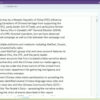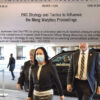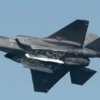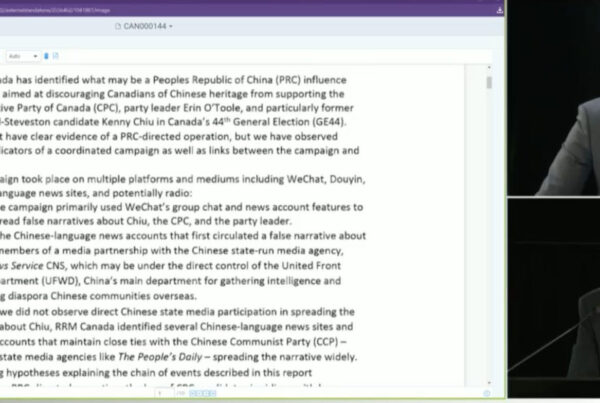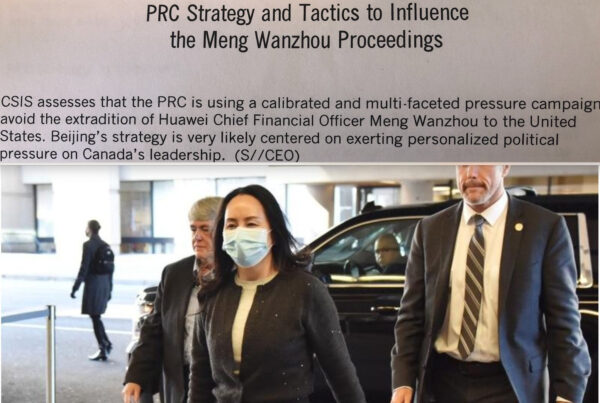At the end of the 1990s, in the wake of the Cold War, it was apparent to the Canadian defence community that the global security environment had undergone significant change. Over and above this recognition there were a number of unfortunate events involving the Canadian Forces (CF) [1] in Somalia, Rwanda, and the former Yugoslavia. In response to all of this the Canadian government undertook a directed review of the nation’s military. Consequently, the final years of that decade produced significant military introspection and change. One of the issues examined during this scrutiny of the CF was the role and organization of the Reserves. Then, the Reserves were shaped by the defence exigencies of the Cold War, as well as the funding available during those years. Arguably, the latest examination of the Reserves started in the 1990s and has been ongoing since. It has ebbed and flowed, shaped by the escalating threats posed by the first two decades of the twenty-first century. These include Canadian military transformation and evolving defence policy, and Canada’s related military engagement at home and abroad, notably in Afghanistan from 2002 to 2014. With the recent articulation of an upcoming defence review to be completed by the end of 2016, the time is at hand to finalize these longstanding initiatives to create Reserve Forces which will meet the ongoing challenges posed to Canada by complex domestic and international security settings.
It is apparent from public statements that the federal government intends to ensure defence capacities will be capable of reacting quickly and comprehensively to many contingencies. This includes not only all aspects of national security, but also assisting others in need. As part of this Canada will (1) maintain and reinforce alliances, especially with the United States, (2) focus developmental assistance to aid struggling members of the global community, and (3) aid efforts to establish international peace through the UN and support worldwide efforts to battle terrorism.
For full-time Canadian military, which numbers about 68,000, the requirements of the numerous tasks that arise from these challenges are difficult, if not impossible, to meet. However, it can be argued that Canada’s Reserve Forces can greatly assist with deepening these capabilities. The Reserves are currently funded for 27,000[2] citizen sailors, soldiers and air personnel, who are trained to a similar level as their regular counterparts, but will require broadening and refreshment of collective and individual skills prior to full-time military employment. Regrettably, with funding constraints that training gap is widening.
There are a number of components to Canada’s Reserves. First, the Primary Reserve consists of a number of parts, Naval, Army, Air Force, Health Services, together with Legal and Special Operations that are each responsible to a service command. They can conduct or augment various operations with varying degrees of notice dependent on whether it is domestic or international. Along with being able to respond to these demands, the Reserve Force provides the CAF connection to Canadian communities and emphasizes citizenship through service to country. Secondly, the Canadian Rangers are the only continuous CAF presence in the Arctic and provide surveillance and patrol services. Thirdly, the Supplementary Reserve currently consists of about 15,000 inactive or retired members of the CAF, regular or reserve, who are willing and could be available for service until age 60. This will be reduced to approximately 7500 through enforcing a five-year limit on retention due to “skill fade.” Last, the Cadet Organizations Administration and Training Service (COATS) consists of officers and non-commissioned members who conduct training, supervise and administer the Canadian Cadet or Junior Ranger movement. For the purposes of this examination of Canada’s Reserve Forces and contributions to national security, COATs will not be considered.
While all elements of the Primary Reserve provide qualified individual augmentation to the Regular Force, the three largest Primary Reserve elements – Naval, Army and Air Reserves – have other roles. The Naval Reserve is integrated into its parent service for generation of forces and have a defined role in the context of the “One Navy” concept. It is also responsible to crew the 12 Maritime Coastal Defence Vessels (MCDV), which are minor war vessels used primarily for coastal surveillance and patrol. These MCDVs are divided between both coasts.
Similarly, the Army Reserve is incorporated into the structure of the Canadian Army. Army Reservists are distributed across Canada in a variety of unit types, 123 individual units in 117 communities and divided into 10 Canadian Brigade Groups (CBG), the latter being to generate forces. The Army Queen’s University in Kingston, Ontario and is currently an Assistant Professor of the Royal Military College of Canada. He is also a member of the Canadian Army Reserve assigned on a part-time basis to the staff of the Canadian Army Doctrine and Training Centre, Kingston. Coombs has a number of operational deployments to the former Yugoslavia and Afghanistan as a military officer on regular and reserve duty. In addition to that he deployed with Joint Task Force Afghanistan from September 2010 to July 2011 as a civilian advisor to the Task Force Commander. He has been awarded the Order of Military Merit and the Canadian Forces Medallion for Distinguished Service Reserve provides a capability for Territorial Battalion Groups (TBG) and Arctic Response Company Groups (ARCG) that, with some notice, can be produced for a variety of domestic operations. Additionally, the Army Reserve has provided up to twenty per cent of augmentation for international deployments. The Army also assigns the influence activities (IA) role, including psychological and information operations, along with civil-military cooperation, primarily to the Army Reserve, The Air Reserve is an integrated or “Total Force” organization that is fully amalgamated into the Royal Canadian Air Force (RCAF). Air reservists receive the same training as their regular comrades-in-arms and are integrated into RCAF units or air reserve squadrons with operational tasks. There are three flying squadrons which are predominantly composed of reservists, two being aviation (rotary wing) squadrons and one an air (fixed wing) squadron.
In addition to the Naval, Army and Air Reserves, the Canadian Forces Health Services Reserve provides field ambulance units and personnel to 1 Canadian Field Hospital Detachment Ottawa. This allows for support to domestic and international deployments through the production of trained medical personnel, as well as supporting Health Services initiatives and affiliated CBGs. Last, the Special Operations and Legal Reserves augment those capabilities on a full or part time basis.
Restructuring is an emotive topic in the Canadian Reserve community. This is largely due to the reorganizations that took place after the Second World War. There were three key factors that contributed to a diminution of Reserve structures and capabilities throughout that time. First, the demands of the Cold War necessitated “forces in being” that could be deployed quickly. It was observed that Reserve Forces with lower training standards were not always equipped in an analogous fashion to the full time military and would require time to mobilize and deploy. Consequently, the value of their contribution was believed questionable. Second, the reductions mandated at various points after the Second World War forced defence planners to make hard choices with regards to reducing capabilities in order to realize savings. Last, there was a consistent lack of coherent and enduring defence strategy, linked to national goals and aspirations. The combination of these factors made the Reserves an opportune target
for reductions and amalgamations, at times when the strong emotional and historical ties between units and their communities were disregarded or minimized. By the end of the Cold War this had created what could be charitably labelled an “acrimonious” relationship between Canadian Regulars and Reservists. However, the end of the Cold War prompted a national re-examination of Reserve roles and structures.
The White Papers, reports, policies and instructions, including recent CAF transformation initiatives, that have transpired since then have created a combination of Regular and Reserve Forces within the framework of Total Force and commenced the alignment of many administrative and financial systems, as well as common core training standards. The large Reserve contributions to international deployments to the Balkans and Afghanistan, as well as sudden domestic operations, like ice storms, floods, fire fighting and other crises have demonstrated the capacity of the Reserve Forces. This involvement needs to be increased, but in a manner that assists with dealing with the current security environment.
Threats are no longer clearly delineated, reasonably predictable and able to be resolved by a single agency. Instead the current security environment
demands integrated organizations that can meet the requirements of the diffuse and opaque dangers embedded within a continuum of hazards. This
setting demands combined groupings with a variety of specialized skills. Reserve Forces can be used to augment this capability for focused and precise
responses to threats. Individuals with the requisite skills can be enrolled in the Reserves on a case-by-case basis using abbreviated military training to provide appropriate rank and sufficient military expertise to allow these individuals to contribute as part of the defence team in their area of expertise. These specialists need to be managed outside of the unit structure. On top of this, a “skills bank” or database of civilian skills should be established that would allow the CAF to access the currently unknown repository of non-military expertise available in the Reserve population.
Also, Reserve units could take on the niche capabilities needed to provide depth and breadth to the CAF’s response in preventing and dealing with security challenges. Influence activities, cyber, space, special operations, unmanned aerial vehicle operation, to name a few, could be considered as responsibilities of Reserve entities. Along with these specific requirements, one must also address the needs of conventional operations. In order to do this, Reserve units need to be re-examined so as to structure them along viable lines matched to the recruiting demographics of the host area, which can vary greatly between urban and rural areas. Groupings should be formed of under-strength Reserve units that can together contribute to be a structure of a single viable unit. This would not involve closing or moving units but simply admitting that a region can only produce a sub-unit or sub-sub-unit, not something larger. These smaller parts can be then combined to form a single and viable unit under a commanding officer. One could also ensure that senior Reserve positions are dedicated to those communities to maintain the historical continuity of senior CAF engagement within
those areas. Building on this idea, senior reservists who would currently be released due to a lack of Reserve positions at their rank level could be kept on strength in order to maintain the CAF connection to communities, as well as establish and act as military liaison for public safety and security. These viable units, in particular those of the Army Reserve, could be further grouped under Reserve formation headquarters, with all resourced sufficiently. Together they could be deployed for domestic operations in their geographic regions. Other parts of the Primary Reserve could, in a similar fashion, be assigned viable domestic response roles, within regional frameworks.
All of this would allow for greater flexibility of employment within a mobilization construct. The time that would normally be needed to train
reservists for employment would be minimized by already developed civilian skills or military expertise in necessary enablers. With progressive stages of mobilization, larger groupings could be generated by reserve units that would be already organized, manned and trained as units, perhaps even from time to time in the context of the appropriate Regular Force structure of their service. This concept lends itself to a re-examination of ideas of reserve mobilization and suggests a need for flexible terms of service. Along with this, an underutilized Supplementary Reserve needs to be used to provide some of the experience needed to augment both the Primary Reserve and Regular Force.
The requirements for Reserve augmentation to international operations and domestic needs should be clearly outlined by the CAF as part of a larger
security strategy. These obligations should be tangible, marked by identified outputs supported by measurable training and employment benchmarks.
Only with a strategic concept can training, operations and maintenance be evaluated and optimized or allow justification of the resources invested in these Reserve activities.
The suggestions highlighted in this article have been articulated in various forms and foras for several decades and implemented to various degrees. The underpinning tenet is to make optimal use of the skills Canadians can contribute through the Reserve Forces to assist with the creation of the integrated intra-government teams that can overcome all security challenges, from public safety to the imperatives of conflict. This means continuing to improve administrative, financial, recruiting and other supporting processes, maintaining training standards that would provide for a level of interoperability between Regular and Reserve Forces, bringing civilian specialists into the Reserves under special arrangements, re-grouping and re-organizing existent units and formations into viable regional entities with domestic deployment capacity, establishing widespread community liaisons incorporating specific enabling capabilities in Reserve units, making use of the latent capacity of the Supplementary Reserve, and assigning concrete and measurable goals and objectives for the Reserve Forces and Canadian Rangers within a strategic security concept. All of this, understanding that the generation of forces by Reserve Forces needs to be able to have immediate and long-term qualities. In the final analysis, it is only in this fashion that one can create the Reserve Forces that Canada truly needs in the complicated and complex security environments posed by the twenty-first
century.
I am indebted to the review and comments of Colonel Pat Kelly, MSM, CD, Canadian Armed Forces Director Reserves and Colonel George Petrolekas, MSM, CD, Special Advisor Commander Canadian Army and Fellow, Canadian Global Affairs Institute, as well as the editing of Lindsay Coombs, in the construction of this article.


